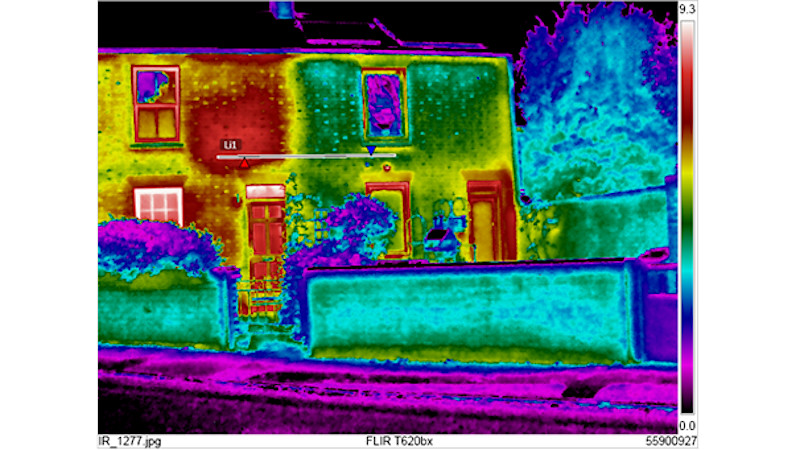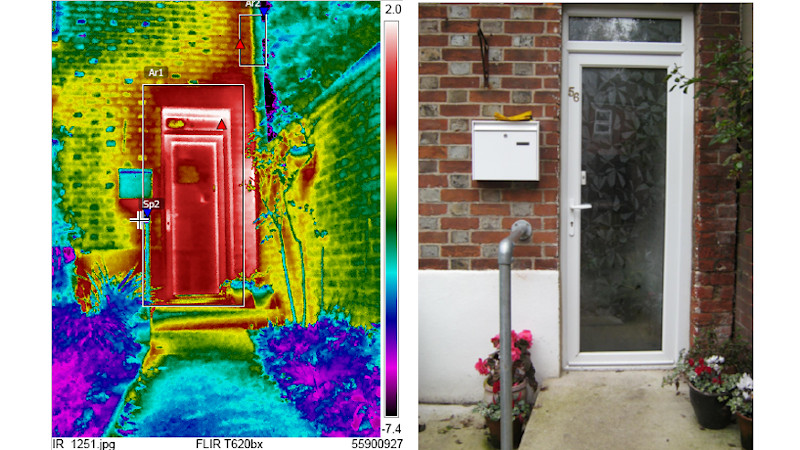The 'low-energy first and then low-carbon’ approach was informed by a thorough, pre-retrofit monitoring and feedback survey during Phase 1.
Monitoring of internal temperatures showed that average temperature in rooms were maintained at 16 degrees Celsius and hence, the annual fuel bills were almost half of what Standard Assessment Procedure (SAP) predicted. The occupants complained about a 'cold' house which was difficult to heat due to lack of insulation and rising fuel costs.
Internal air quality (CO2 levels) and daylight levels were found to be poor. Thermal imaging confirmed the fabric heat losses.
In line with this, a range of measures were applied to achieve a robust and practical whole-house retrofit solution:
- Fabric improvement - insulation: Building fabric was improved to stringent U-values, high-performance, triple-glazed passivhaus windows and composite insulated external doors.
- Minimisation of thermal bridges: Used accredited construction details, by detailing for continuous insulation and air barrier on external walls to prevent condensation, party wall insulation and using a thermal laminate on the underside of the roof in the ceilings of the bedrooms.
- Day lighting: Roof-lights were added, as monitoring showed daylight factors of <1% in north-facing spaces.
- Airtightness: Air permeability of 1m3/hm2 @ 50 Pa was targeted. Upgradation of windows and doors, minimising thermal bridges and insulating and sealing all air leakage pathways to achieve an airtight fabric.
- Ventilation: Mechanical ventilation system with heat recovery (MVHR) was installed to provide controlled ventilation and maintain an appropriate air change rate.
- Efficient systems: LED lighting throughout, along with available A++ energy rated appliances, automatic standby savers, voltage optimisation and A-rated gas condensing boiler.
- Zero-carbon technologies: A 3m2 evacuated tube solar thermal system with a low-energy pump, and a 1kWp photovoltaic system.
- Extra measures: Water conservation measures, low solvent paints, etc. A bespoke monitoring and feedback system displays real-time gas and electricity use, internal temperature, humidity, CO2 levels, and any energy being wasted through open windows, unused equipment and lighting.




